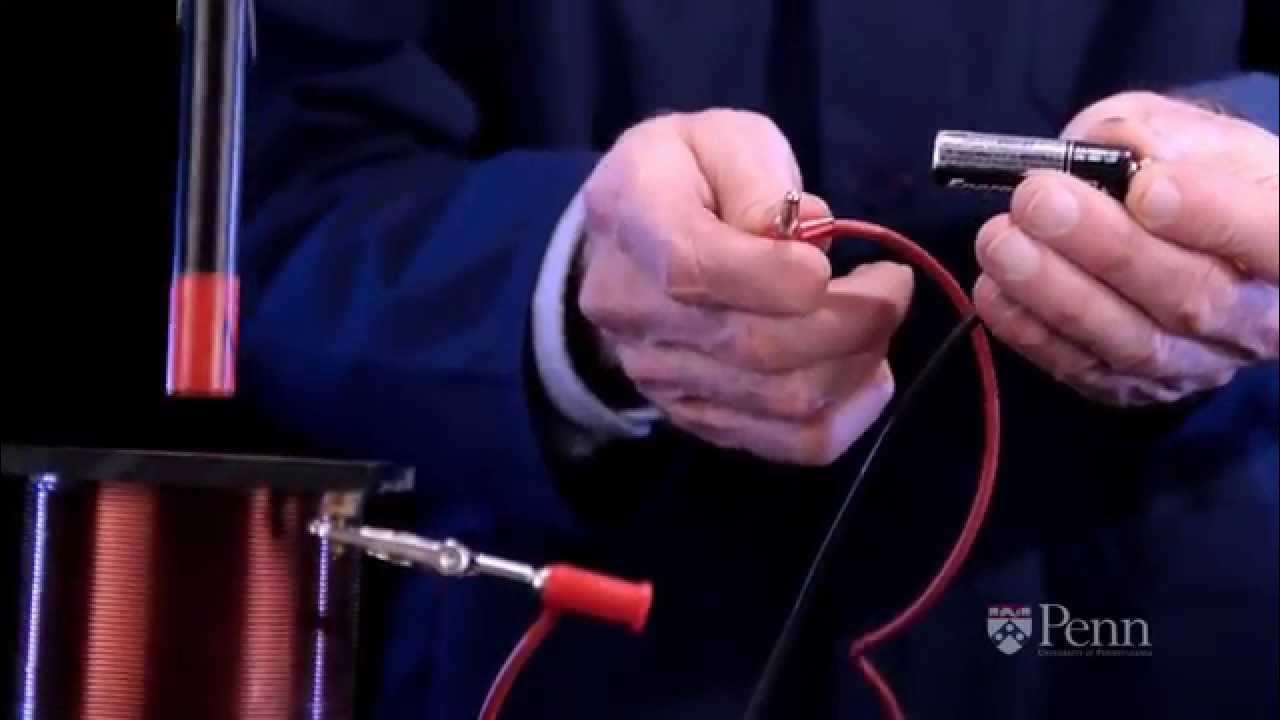IPA FISIKA : Percobaan Induksi Magnet & Gaya Lorentz. Prinsip Kereta Magnet (Eksperimen Praktikum)
Summary
TLDRThis video demonstrates the fascinating interaction between electricity and magnetism, using a copper wire coil, a battery, and a neodymium magnet. When the electric current from the battery flows through the coil, it creates a magnetic field that interacts with the permanent magnet, resulting in the movement of the battery. The experiment illustrates the principles of magnetic induction and Lorentz force, where the direction of movement is determined by the current flow and the orientation of the magnetic field. This engaging demonstration showcases the fundamental laws of electromagnetism in action.
Takeaways
- 😀 The experiment involves creating a coil using copper wire, with a battery and neodymium magnet.
- 😀 Neodymium magnets are placed at the ends of the battery, ensuring the correct orientation of the poles.
- 😀 The battery is inserted into the coil, and current starts to flow through the copper wire.
- 😀 The electric current passing through the coil generates a magnetic field around it.
- 😀 The generated magnetic field of the coil interacts with the permanent magnetic field of the neodymium magnet.
- 😀 According to Lorentz force, the interaction between these fields causes the battery to move.
- 😀 The direction of the battery's movement is determined by the direction of the current and the orientation of the magnetic fields.
- 😀 The right-hand rule is used to predict the direction of the force and movement in the experiment.
- 😀 This experiment demonstrates the principle of magnetic induction.
- 😀 The movement of the battery is an example of the application of Lorentz force, a fundamental concept in electromagnetism.
- 😀 The experiment shows the practical effects of how electric currents generate magnetic fields that interact with permanent magnets.
Q & A
What materials are required for the experiment in the script?
-The materials needed are copper wire, a battery, a permanent magnet (neodymium magnet), and a coil (kumparan).
How is the neodymium magnet oriented with respect to the battery?
-The north poles of the neodymium magnet should be placed at the outer ends of the battery.
What happens when the battery is placed inside the coil?
-When the battery is inserted into the coil, the battery begins to move due to the interaction between the magnetic fields.
Why does the battery move when current flows through the coil?
-The movement of the battery occurs because the electric current flowing through the coil generates a magnetic field, which interacts with the magnetic field of the neodymium magnet.
What causes the force that moves the battery?
-The force is created by the interaction between the magnetic field generated by the current in the coil and the magnetic field of the permanent magnet, in accordance with Lorentz force law.
What principle does this experiment illustrate?
-This experiment demonstrates the principle of magnetic induction and the Lorentz force law.
What determines the direction of the battery's movement?
-The direction of the battery's movement is determined by the direction of the current and the orientation of the magnetic field, as described by the right-hand rule.
What is the role of the coil in this experiment?
-The coil, or kumparan, serves as a conductor through which current flows, creating a magnetic field that interacts with the magnetic field of the permanent magnet, leading to the movement of the battery.
What is the significance of using a neodymium magnet in this experiment?
-Neodymium magnets are used because they have a strong magnetic field, which enhances the interaction with the magnetic field generated by the coil, making the experiment more effective.
How does the right-hand rule apply to this experiment?
-The right-hand rule helps determine the direction of the force acting on the battery. If you point the thumb of your right hand in the direction of the current, and the fingers in the direction of the magnetic field, the palm will face the direction of the force.
Outlines

Cette section est réservée aux utilisateurs payants. Améliorez votre compte pour accéder à cette section.
Améliorer maintenantMindmap

Cette section est réservée aux utilisateurs payants. Améliorez votre compte pour accéder à cette section.
Améliorer maintenantKeywords

Cette section est réservée aux utilisateurs payants. Améliorez votre compte pour accéder à cette section.
Améliorer maintenantHighlights

Cette section est réservée aux utilisateurs payants. Améliorez votre compte pour accéder à cette section.
Améliorer maintenantTranscripts

Cette section est réservée aux utilisateurs payants. Améliorez votre compte pour accéder à cette section.
Améliorer maintenant5.0 / 5 (0 votes)






